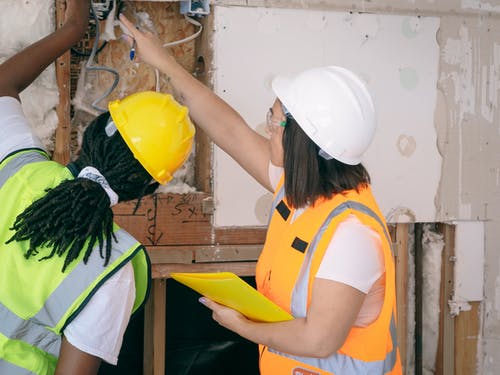Building inspectors Melbourne examine multiple systems within your home or building. Below are a few ways you can prepare for their visit and ensure they will get an accurate report.
At first, begin by clearing away any obstacles on the property to allow access to all elements requiring inspection.
Check the Electrical Panels
An electrical panel is an essential element of any building, as it protects wires from high levels of electricity. Unfortunately, over time its condition can deteriorate and cause costly problems; to extend its lifespan you should conduct regular inspections and maintenance checks to maintain it and extend its life span.
Ideal mounting conditions for panels should include concrete or steel braces to avoid rust formation and other issues; an experienced electrician is best qualified to assist here. Furthermore, every panel should be clearly labeled so the inspector can quickly recognize its functions; any unreadable labels should be replaced before the inspection arrives.
Wires should run in an organized fashion around the perimeter of a panel. If you observe any inextricable knots or signs of melting insulation, contact an electrician immediately; an electrician can inspect and repair/replace as necessary.
Electrical service panels resemble rectangular metal boxes attached to walls of homes and other buildings, and must have covers to avoid serious fire and electrocution hazards. As any uncovered panel poses both fire and electrocution risks, no attempt should be made to open it unless appropriate safety training has been obtained first; similarly any contact between hand tools and your electrical service panel should also be avoided as that may transmit electric shock.
Check for Insects
Before inviting an inspector onto your property, ensure all insects have either died or left. Pests can reveal much about a home; look out for signs of infestation such as faecal pellets, signs of chewed-up artifacts, greasey rub marks or perforated skins or wings as well as strong odour.
Check mattresses for red-tinged pinhead-sized spots of excrement which could indicate bed bug activity; any sweet-scented smell may also signal their presence. Inspect tub floors for any signs of cockroach infestation as well as sticky areas behind appliances and the stove for evidence of rodent activity. When inspecting kitchen and bathroom fixtures for signs of pest infestations such as sticky tub floors with greasy, sticky residue. Also look out for any sign of rodent activity near electrical outlets where grease builds up; such residue could indicate rodent activity!
On the exterior, make sure that all eavestroughs and downspouts are free from debris and functioning efficiently so that water drains away from your foundation. Firewood stacks, compost bins, yard waste and firewood should be stored away from your house as these materials could contain nesting materials for nesting insects or be hiding nesting materials for nesting species; plants should also be trimmed regularly so as to not encroach on any walls, and shrubs/trees pruned so their branches do not touch your foundation either.
Finally, check all doors to make sure they seal tightly after completing any projects that involved painting, installing new doors or cabinets, flooring etc. Also double-check that window screens are in tact and caulk all passage points of cable heating, plumbing or ventilation items in walls to protect them from pests crawling in.
Remove Any Obstructions
Before your inspection begins, remove any obstructions to elements in need of examination such as boxes stacked high on shelves or debris in the attic or basement; blocked windows and doors; etc. Doing this will give the inspector an easier time doing their job and give a clear view of any areas needing inspection. Also ensure they can easily access electrical panels or equipment on your property by clearing away items you usually keep out of reach from him or her.
Before beginning construction on any new structure, it is vitally important to have the site and foundation examined by a licensed building inspector. An inspector will be able to assess if your foundation has been graded and excavated properly and can quickly address any issues that are found before the foundation has been poured – saving both time, money, and inconvenience down the line.
Pre-construction building inspections can be invaluable tools for both contractors and homeowners, alike. A pre-construction building inspection ensures all structural components are in place, creating an environment in which people entering later will remain safe from harm. Furthermore, its report can serve both parties in negotiations regarding immediate repairs or market value adjustments.
Schedule the Inspection
Building inspection is an integral component of construction. It ensures all structural components meet industry standards while also helping identify any issues requiring repair or maintenance – such as cracked foundation or loose siding – and gives homeowners and contractors alike confidence in the quality of their projects.
As part of your preparation for a building inspection, read over the International Standards of Practice (ISO). This will give you an understanding of what an inspector may look for and can prevent any confusion later on.
Before an inspection takes place, it’s crucial that all necessary documents and records have been gathered – such as lease agreements, certificates of occupancy, building and fire code violations, service contracts, repair invoices and maintenance records.
Finally, to make your inspection as effective as possible you should declutter the area you want inspected by removing items that could obstruct access to elements needing examination – this applies both indoors and outdoors; home inspectors need access to electrical panels or attic space without obstruction from stored items in closets or under beds that might get in their way.


